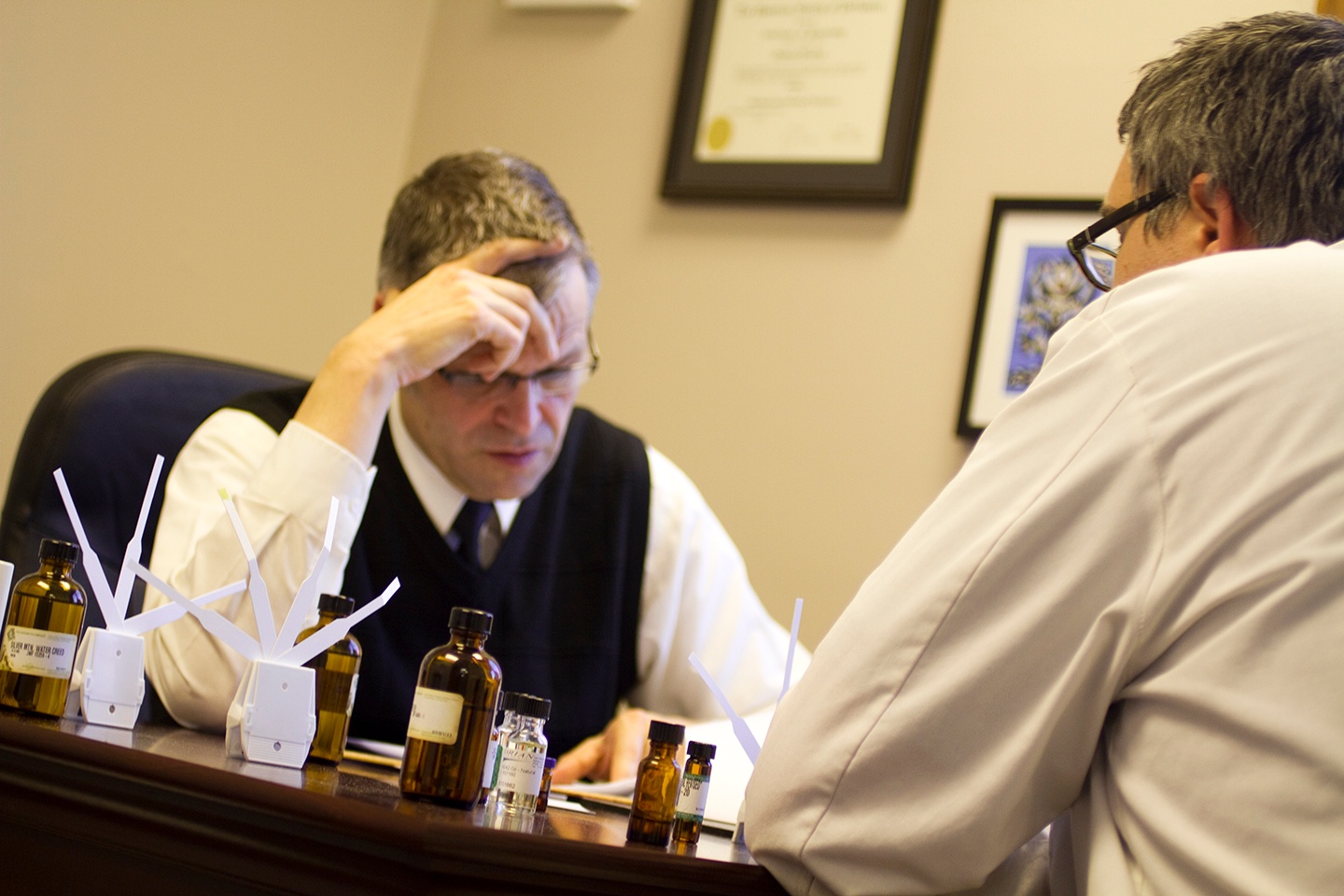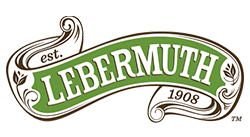Article- Keeping with Tradition: Essential Oil History, Use and Production: A Review
by Lebermuth, on Jul 17, 2019
Essential Oils has been the core of Lebermuth since we were founded in 1908. It's importance to our core as evolved over time and is the foundation to our Fragrance & Flavor divisions. Our vast knowledge, expertise and staff provide us the ability to utilize many of the components of nature's gift to create aromatic & flavorful solutions for our customers. We couldn't help but support Cosmetics & Toiletries featured article on Essential Oils History & Production.
Cosmetics & Toiletries l Author Vinay K. Singh, Ganesha Personal Care, Mumbai
Numerous essential oils are used in today’s cosmetics. A typical oil will contain more than 100 different chemical compounds, each of which exhibits a specific therapeutic property. It is for this reason that many oils can be used for a wide range of conditions. In fact, virtually all essential oils possess antiseptic properties, but many also have antifungal, antiviral and antibacterial properties. Other benefits of essential oils come from their antioxidant, antimicrobial and anti-inflammatory properties.
The majority of consumers are also familiar with essential oils and know them anecdotally for specified therapeutic effects. For example, tea tree to disinfect; eucalyptus to loosen phlegm; rosemary to stimulate circulation; lavender and sandalwood to soothe; lemongrass to refresh; jasmine to enhance mood; etc. However, several of the purported effects and benefits of traditional plant-derived medicines have been clinically proven.1-3 The traditions of Ayurveda and Traditional Chinese Medicine (TCM) are still very much alive in modern, high-quality natural cosmetics. Following is a brief review of their history, personal care applications and production processes, for the novice formulator.

Photo: Jim Fuchs, Lebermuth Perfumer
History of Use
Essential or aromatic oils have been used by many cultures around the world for centuries for cosmetic, as well as spiritually and emotionally uplifting, properties. It is impossible to know exactly when plants were first used for medicinal purposes, but carbon dating of cave paintings at Lascaux in France suggest their use in everyday life as far back as 18,000 B.C.E.4
Egyptians: Evidence and recorded history also have shown the Egyptians used aromatic oils as early as 4,500 B.C.E.4In fact, at the height of Egypt’s power, priests were the only authorities allowed to use aromatic oils as they were regarded as being one with the gods. Specific fragrance oils were dedicated to each deity and their statues were anointed with them by their followers. Pharaohs also had their own special blends for meditation, love, war, etc.
Essential oils also had practical and medicinal values to the Egyptians. Due to their antiseptic, antifungal and anti-inflammatory properties, many essential oils were used in embalming practices; aromatic cedar and myrrh, for example, traces of which have been found on mummies today.5 Other spices and resins used to purify and preserve the body included frankincense, calamus, cassia and spikenard.6 Oils were also buried with the body so the spirits in the afterlife could enjoy their fragrant and medical properties. Indeed, onyx, glass, ivory and alabaster bottles have been found in tombs, containing the remnants of essential oils with their scent and healing qualities still intact.
Ayurveda: Traditional Indian medicine, or Ayurveda, has a 3,000-year history of incorporating essential oils into healing elixirs. Vedic literature lists more than 700 substances including cinnamon, ginger, myrrh and sandalwood as effective for healing. In fact, much later, during the outbreak of the Bubonic plague, Ayurveda practices and treatments were used successfully to replace ineffective antibiotics.4
Biblical and Roman times: There are 188 references to the use of oils in the Bible; some, such as frankincense, myrrh, rosemary, hyssop and spikenard, were described for anointing and healing the sick. The Romans were more lavish in their use of fragrant oils. They scented everything from their hair, bodies, clothes and even the walls of their homes.7
Modern times: During the 19th century, many essences were investigated more scientifically than ever before. In 1887, Chamberland published the results of his research on the antiseptic properties of essential oils. Some decades later, lavender oil was discovered as a natural healer. French chemist René-Maurice Gattefossé8 learned of its medicinal properties accidentally when a small explosion in his laboratory burned one of his hands. As the story goes, he quickly immersed it in the nearest tray of liquid—lavender essential oil. Reportedly, his hand healed with no infection or scarring. Gattefossé and a colleague thus conducted further research on the healing properties of lavender and introduced it to many of the hospitals in France. During the outbreak of Spanish influenza, no deaths of hospital personnel were reported, which was credited to the use of lavender.
High quality is key with essential oils. Bioactive compounds produced with Super Critical Fluid Extraction (SFE) leave no solvent residue to repress the skin’s microbiome. -Sabinsa
Since the turn of the century, interest has grown in the therapeutic power of essential oils. Research in this field has grown in Germany, Switzerland, France and England. Aromatherapy is also being taught in medical schools in France and England, and oils are more frequently being used by doctors in many hospitals.9
In Personal Care
As is well-known, essential oils have been important contributors to personal care thanks to their wide range of attributes; from fragrance and antimicrobial activity, to anti-inflammatory benefits. They are used in perfumes, cosmetics, soaps and other products; as well as for flavoring food and drinks, and for adding scent to incense and household cleaning products.
From a chemistry standpoint, an essential oil is a concentrated hydrophobic liquid containing fragrant, volatile compounds from plants of a certain species. Essential oils also are known as volatile oils, ethereal oils, aetherolea or simply as the oil of the plant from which they were extracted. An oil is “essential” in the sense that it contains the “essence” of the plant—the characteristic fragrance and phytonutrients of the plant from which it is derived. The most important groups of organic molecules they contain are terpenes and terpenoids.10
More than 1,000 plant families and roughly 2,000 species provide what are referred to as essential oils. Essential oils are located in tiny secretory structures found in various parts of plants such as: leaves (eucalyptus, sage, thyme); berries (juniper); grasses (palmarosa, citronella); flowering tops (lavender); petals (rose, jasmine, ylang-ylang); roots (vetiver, angelica); fruit (orange, lemon); resins (frankincense, myrrh); wood (cedar, sandalwood, rosewood); bark (cinnamon); seeds (almond, ajwain, dill, cumin); leaves; rhizome (ginger, galangal); and peels (lemon, lime, orange).
Despite the name, they do not feel oily; essential oils are lighter than water. They cannot be diluted with water, but easily mix with alcohol or fats. Essential oils are generally extracted by distillation, often by using steam. Other processes include expression, solvent extraction, absolute oil extraction, resin tapping and cold-pressing.
Interest in essential oils has revived in recent decades with the popularity of aromatherapy, a branch of alternative medicine and wellness, purporting essential oils and other aromatic compounds to have curative effects, especially on the mind and emotions.11 Such oils are volatilized or diluted in a carrier oil and either used in massage, diffused in air by a nebulizer, heated over a candle flame or burned as incense.
Essential oils have always been a key ingredient for perfumers, as synthetic fragrance components were not developed until the end of 19th century. Classic choices for perfume compositions continue to include essential oils from flowers such as rose, jasmine and lavender; fruits such as bergamot and orange; woods like sandalwood and cedar; spices such as anise and myrrh; roots of vetiver; and the needles of conifer trees or berries of the juniper bush.
Essential Oil Production
The earliest recorded mention of the techniques and methods used to produce essential oils is believed to be that of Ibn al-Baitar (1188–1248),12, 13 an Andalusian physician, pharmacist and chemist. Centuries later, and still today, techniques used range from distillation and expression, to solvent extraction, enfleurage, percolation, maceration and more. Following is an overview.





